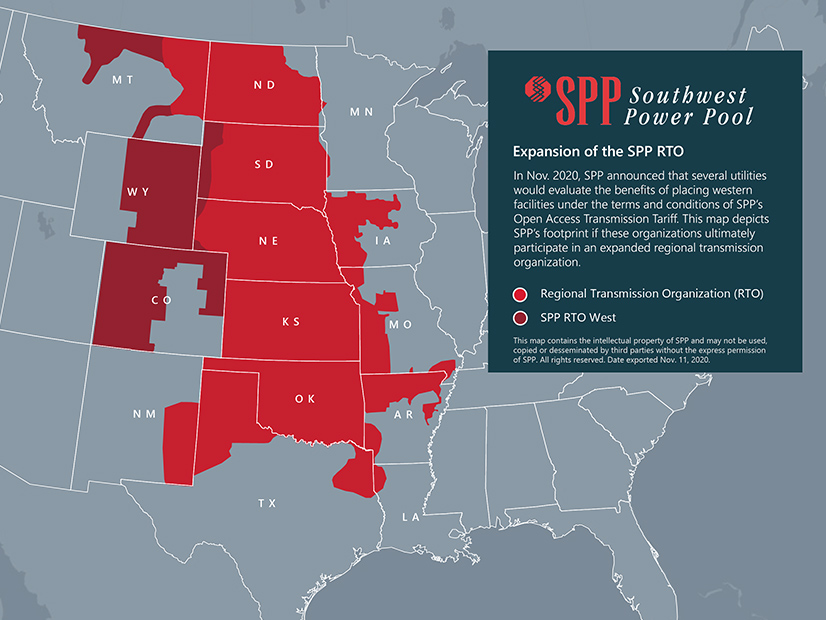SPP CEO Barbara Sugg briefed WECC’s Board of Directors last week on the RTO’s efforts in the Western Interconnection and potential benefits for stakeholders there, including full membership in SPP’s proposed RTO West.
SPP operates as a reliability coordinator in parts of the West and is helping the Northwest Power Pool develop a multistate resource adequacy program that it hopes to administer, Sugg said.
Earlier this year, SPP started its Western Energy Imbalance Service (WEIS) to compete with CAISO’s Western Energy Imbalance Market (EIM), and WEIS members have expressed interest in joining a Western RTO led by SPP, she said.

“Those entities that join the WEIS are very interested in full RTO membership,” she said, naming Basin Electric Power Cooperative, Deseret Power Electric Cooperative, the Municipal Energy Agency of Nebraska, Tri-State Generation and Transmission Association, the Western Area Power Administration’s Upper Great Plains West and Rocky Mountain regions, and the Colorado River Storage Project. (See 6th Western Utility Interested in SPP Membership.)
More recently, Colorado Springs Utilities (CSU) decided to drop its plans to join CAISO’s EIM and instead join the WEIS. CSU’s decision prompted much-larger Xcel Energy to reconsider its plan to join the EIM. Both moves followed the Colorado legislature’s passage of Senate Bill 72, which requires the state’s transmission owners to join an RTO by 2030. (See Xcel Delays Joining EIM to Examine Options.)
WEIS participants have all signed letters of investigation aimed at joining an SPP-led Western RTO, she said.
SPP is “looking at consolidating those balancing authorities in the West … into a separate balancing authority, so SPP would then operate two BAs,” one in the Eastern Interconnection and another in the Western Interconnection, Sugg said. The proposed RTO West would provide a day-ahead market and regional transmission planning and consolidate multiple transmission tariffs into a single tariff, she said.
SPP’s Appeal
Past attempts to form a Western RTO have failed, but Colorado’s measure and a similar law in Nevada could spur new efforts. (See related story, Many Next Steps to Follow Passage of Nevada Energy Bill.)
Stakeholders often mention CAISO and SPP as candidates to lead one or more new RTOs, but CAISO attracts criticism for being California-centric. The state’s governor appoints its Board of Governors, and the State Legislature dictates its policies. Entities in other Western states have been loath to join a CAISO-led RTO under those conditions, and California lawmakers have been unwilling to lose control of the ISO by opening its governance structure.
SPP’s more inclusive governance model could prove appealing to Western entities “largely because of the stakeholder process, because of the opportunity to engage and have a voice and be able to influence [decisions],” Sugg said.
The process is “very appealing to our stakeholders, and they will fight feverishly to maintain it,” she said. “It’s a very robust, inclusive stakeholder process that ensures everyone has a meaningful say. Our stakeholders are able to engage in committees and working group task forces and advisory groups … and those groups have a tremendous influence on board decisions.
“We feel like that’s what makes people want to do business with SPP,” instead of CAISO, she said.


